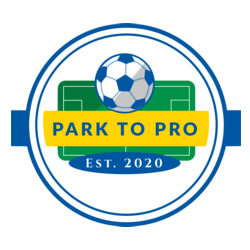During your session planning design, how much consideration do you give to the direction of the practice or how many defenders you have? What moment of the game do you want to focus on, within your training structure? Your players currently take part in the game on a regular basis and will know that there is always 2 goals used, for the game to be universally correct. There are also opponents present, lines on the field and 1 ball used.
On the training pitch, coaches all over the world will be planning lots of different practices with a huge variety of outcomes. If you were to view another coach at work, you would probably see something, from the list below;
Children in lines – Players lining up with/without a football, waiting for their turn to have a go at a certain exercise, possibly kicking the ball at the goal.
1 ball, 1 player – Typical on the continent and with many academy set ups in the UK. Players might move around with the ball, executing a given movement with a certain name. The ‘Maradona’ turn or the ‘Ronaldo’ chop for example.
Kicking exercise – This is usually at the discretion of the coach and he/she would intrust the players where they need to kick the ball. There would also be no opposition in this exercise, meaning you would just be kicking and not passing.
Passing exercise – In this exercise you would be passing the ball to a team mate, with opposition players in close proximity. This could look like a typical typical, ‘Rondo’.
Position game – The position exercise is an opportunity for players to execute actions, that could be familiarised with that certain role. Using this practice would have goals in play, meaning it is directional.
Possession game – In this exercise you would use no goals, so beware of the behaviour you will be conditioning. The objective would just be about keeping possession of the ball as an individual or team.
Tactical game – This would be used for the largest format you would have available and be best fit, in order to refine the communication of the team. Goals would be needed as you would be replicating the closest part of the game.
While there could be another method that a coach could use, the above summarises a number of exercises that could quite possibly be seen.
Now, within each session there has to be some kind of objective that you wish to achieve. Using different exercises is merely a tool, to help you the coach and your players, in understanding where competencies lie.
If you use the small steps listed below, you will see that you can identify the key areas that you may need, in order to reach success.
Football – 11 v 11, 9 v 9, 7 v 7 or 5 v 5
Team function – Attacking, transitioning (to defence), defending & transitioning (to attack)
Team task – Building up, creating goalscoring opportunities, disrupting the build up & preventing goalscoring opportunities
Football actions – Passing, pressing, running with the ball and intercepting etc….
You have the game and the format that your players compete in
There will be a certain function that you wish to focus on. This will be dictated by the ball and which moment of the game that it is
When you have/don’t have the ball, you will then be participating in a certain task
Finally, there will be football actions to execute the above intentions
The power of zooming out completely and looking at the game as a starting point, could help you in identifying exactly what you want to work on. Zooming in and specifically looking at a player first, will lead you down a pathway that maybe be confusing, as you won’t be coaching a specific part of the game, more what a player may do.
Next week, we will look at tools you could use, when zooming into the training session structure.


